|
|
|
Sort Order |
|
|
|
Items / Page
|
|
|
|
|
|
|
| Srl | Item |
| 1 |
ID:
189203
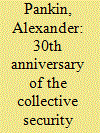

|
|
|
|
|
| Summary/Abstract |
I am grateful to the organizers, and I am grateful to my colleagues, my friends, [Secretary General of the Collective Security Treaty Organization] Stanislav Zas, and the deputy ministers for coming to Moscow to participate in this conference.
|
|
|
|
|
|
|
|
|
|
|
|
|
|
|
|
| 2 |
ID:
015650
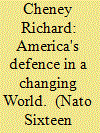

|
|
|
|
|
| Publication |
1992.
|
| Description |
8-11
|
|
|
|
|
|
|
|
|
|
|
|
|
|
|
|
| 3 |
ID:
186181
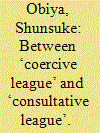

|
|
|
|
|
| Summary/Abstract |
This article addresses debates surrounding the reform of the League of Nations from the viewpoint of Britain and China. They focused on the pros and cons of collective security because the failure of the League to stop Japanese invasion of Manchuria and Italian invasion of Abyssinia threatened the collapse of the League. There were two contrasting visions in debates, the ‘Coercive League’ and the ‘Consultative League’. The ‘Coercive League’ was the course to reinforce collective security to prevent further aggression. Conversely, the ‘Consultative League’ argument was to weaken collective security and induce Germany, Italy, and Japan to cooperate with the League. Deliberations took place in both the Council, in which great powers exerted a strong presence, and the Assembly, in which small powers made their voices heard. Therefore, this article deals with Britain as an example of a great power and China as one of a small power.
|
|
|
|
|
|
|
|
|
|
|
|
|
|
|
|
| 4 |
ID:
156359


|
|
|
|
|
| Summary/Abstract |
MAJOR-POWER competition is back. Russia’s annexation of Crimea, its subversive actions in eastern Ukraine, and its belligerent actions, rhetoric and nuclear signaling toward many European countries and the United States have forced members of the North Atlantic Treaty Organization (NATO) to refocus much of their activities on improving deterrence of Moscow. Similarly, China’s increasingly assertive actions in the East and South China Seas, and elsewhere, are driving the United States and its Asian allies to discuss ways to strengthen deterrence of Beijing. Over the past few years, a considerable amount of work has begun in Washington and beyond to find solutions to these important problems, because, while Russia and China are different actors (the former is a declining power and the latter a rising power), they are the only two states capable of challenging the United States militarily, both now and in the foreseeable future.
|
|
|
|
|
|
|
|
|
|
|
|
|
|
|
|
| 5 |
ID:
017549


|
|
|
|
|
| Publication |
Summer 2000.
|
| Description |
237-253
|
|
|
|
|
|
|
|
|
|
|
|
|
|
|
|
| 6 |
ID:
075470
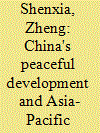

|
|
|
| 7 |
ID:
061907
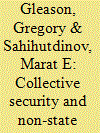

|
|
|
| 8 |
ID:
165131


|
|
|
|
|
| Summary/Abstract |
Cyberspace experiences worrying trends that could have a negative impact on the international strategic landscape. The lack or erosion of norms and risky practices and behaviors could lead to greater uncertainty and thus greater instability. Set against a context of renewed competition between great powers, these developments are also tied to the strategic structure of cyberspace. This forum is devoted to discussing factors leading to stability or and instability.
|
|
|
|
|
|
|
|
|
|
|
|
|
|
|
|
| 9 |
ID:
046265


|
|
|
|
|
| Publication |
Aldershot, Ashgate Publishing Limited, 2003.
|
| Description |
xi, 589p.
|
| Series |
Library of essays in International law
|
| Standard Number |
0754622555
|
|
|
|
|
|
|
|
|
|
|
|
Copies: C:1/I:0,R:0,Q:0
Circulation
| Accession# | Call# | Current Location | Status | Policy | Location |
| 046299 | 341.72/WHI 046299 | Main | On Shelf | General | |
|
|
|
|
| 10 |
ID:
005664
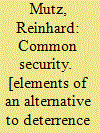

|
|
|
|
|
| Publication |
New Delhi, Friedrich Ebert Stiftung, 1988.
|
| Description |
81p.
|
|
|
|
|
|
|
|
|
|
|
|
Copies: C:1/I:0,R:0,Q:0
Circulation
| Accession# | Call# | Current Location | Status | Policy | Location |
| 035735 | 327.116/MUT 035735 | Main | On Shelf | General | |
|
|
|
|
| 11 |
ID:
053514
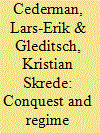

|
|
|
| 12 |
ID:
165133
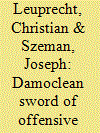

|
|
|
|
|
| Summary/Abstract |
Cyberspace is a new domain of operation, with its own characteristics. Cyber weapons differ qualitatively from kinetic ones: They generate effects by non-kinetic means through information, technology, and networks. Their properties, opportunities, and constraints are comparable to the qualitative difference between conventional and nuclear weapons. New weapons and their target sets in a new domain raise a series of unresolved policy challenges at the domestic, bilateral, and international levels about deterrence, attribution, and response. They also introduce new risks: uncertainty about unintended consequences, expectations of efficacy, and uncertainty about both the target’s and the international community’s response. Cyber operations offer considerable benefits for states to achieve strategic objectives both covertly and overtly. However, without a strategic framework to contain and possibly deter their use, make state and non-state behavior more predictable in the absence of reciprocal norms, and limit their impact, an environment where states face persistent attacks that nonetheless fall below the threshold of armed conflict presents a policy dilemma that reinforces collective insecurity.
|
|
|
|
|
|
|
|
|
|
|
|
|
|
|
|
| 13 |
ID:
001205


|
|
|
|
|
| Publication |
Westport, Praeger, 1997.
|
| Description |
xii, 279p.
|
| Standard Number |
0275958577
|
|
|
|
|
|
|
|
|
|
|
|
Copies: C:1/I:0,R:0,Q:0
Circulation
| Accession# | Call# | Current Location | Status | Policy | Location |
| 040700 | 355.031/GAR 040700 | Main | On Shelf | General | |
|
|
|
|
| 14 |
ID:
165132
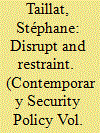

|
|
|
|
|
| Summary/Abstract |
In the last decade, cyber conflict has become a main feature of international politics and a growing concern for strategic stability and collective security. Unfortunately, cyber conflict suffers from a lack of conceptual clarity about its impact on collective security and a lack of consensus among international actors on how to interpret it. This article proposes to understand cyber conflict as an evolving process driven by two factors: the way in which digital space is configured and the way in which tactical, organizational, strategic, and doctrinal characteristics related to cyber have been included in the field of national and international security. Both tend to encourage offensive behavior but also demonstrate features pointing to restraint.
|
|
|
|
|
|
|
|
|
|
|
|
|
|
|
|
| 15 |
ID:
072909


|
|
|
|
|
| Publication |
2006.
|
| Summary/Abstract |
Is collective security possible when evaluating and responding to threats depend on access to intelligence that, by its nature, cannot be shared openly? Debates over whether the United States should share intelligence with and through the United Nations have arisen in every administration and have been won each time by those who showed that it was in the US interest to do so. The question is no longer whether intelligence should be shared, but rather how and to what effect.
|
|
|
|
|
|
|
|
|
|
|
|
|
|
|
|
| 16 |
ID:
117885
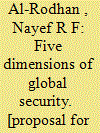

|
|
|
|
|
| Publication |
Zurich, Lit Verlag GmbH Co, 2007.
|
| Description |
156p.pbk
|
| Standard Number |
9783037351640
|
|
|
|
|
|
|
|
|
|
|
|
Copies: C:1/I:0,R:0,Q:0
Circulation
| Accession# | Call# | Current Location | Status | Policy | Location |
| 057099 | 327.17/ALR 057099 | Main | On Shelf | General | |
|
|
|
|
| 17 |
ID:
138799
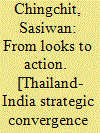

|
|
|
|
|
| Publication |
New Delhi, Institute for Defence Studies and Analyses (IDSA), 2015.
|
| Description |
44p.Pbk
|
| Contents |
IDSA Occasional Paper No. 40
|
| Standard Number |
9789382169543
|
|
|
|
|
|
|
|
|
|
|
|
Copies: C:2/I:0,R:0,Q:0
Circulation
| Accession# | Call# | Current Location | Status | Policy | Location |
| 058219 | 327.116593054/CHI 058219 | Main | On Shelf | General | |
| 058220 | 327.116593054/CHI 058220 | Main | On Shelf | General | |
|
|
|
|
| 18 |
ID:
006201


|
|
|
|
|
| Publication |
Boulder, Westview Pr., 1994.
|
| Description |
ix,269p.
|
| Standard Number |
081317444
|
|
|
|
|
|
|
|
|
|
|
|
Copies: C:1/I:0,R:0,Q:0
Circulation
| Accession# | Call# | Current Location | Status | Policy | Location |
| 037595 | 327.1/MIL 037595 | Main | On Shelf | General | |
|
|
|
|
| 19 |
ID:
173006
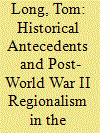

|
|
|
|
|
| Summary/Abstract |
After World War II, the US-led international security order exhibited substantial regional variation. Explaining this variation has been central to the debate over why is there no nato in Asia. But this debate overlooks the emergence of multilateral security arrangements between the United States and Latin American countries during the same critical juncture. These inter-American institutions are puzzling considering the three factors most commonly used to explain divergence between nato and Asia: burden-sharing, external threats, and collective identity. These conditions fail to explain contemporaneous emergence of inter-American security multilateralism. Although the postwar inter-American system has been characterized as the solidification of US dominance, at the time of its framing, Latin American leaders judged the inter-American system as their best bet for maintaining beneficial US involvement in the Western Hemisphere while reinforcing voice opportunities for weaker states and imposing institutional constraints on US unilateralism. Drawing on multinational archival research, the author advances a historical institutionalist account. Shared historical antecedents of regionalism shaped the range of choices for Latin American and US leaders regarding the desirability and nature of new regional institutions while facilitating institutional change through mechanisms of layering and conversion during this critical juncture.
|
|
|
|
|
|
|
|
|
|
|
|
|
|
|
|
| 20 |
ID:
132925
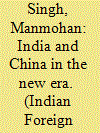

|
|
|
|
|
| Publication |
2014.
|
| Summary/Abstract |
Above all, India and China need a stable, secure and prosperous Asia Pacific region. The centre of gravity of global opportunities and challenges are shifting to this region. In the coming decades, China and India, together with the United States, Japan, Korea and the ASEAN Community, will be among the largest economies in the world. While this region embodies unparalleled dynamism and hope, it is also one with unsettled questions and unresolved disputes. It will be in our mutual interest to work for a cooperative, inclusive and rule-based security architecture that enhances our collective security and regional and global stability.
|
|
|
|
|
|
|
|
|
|
|
|
|
|
|
|
|
|
|
|
|